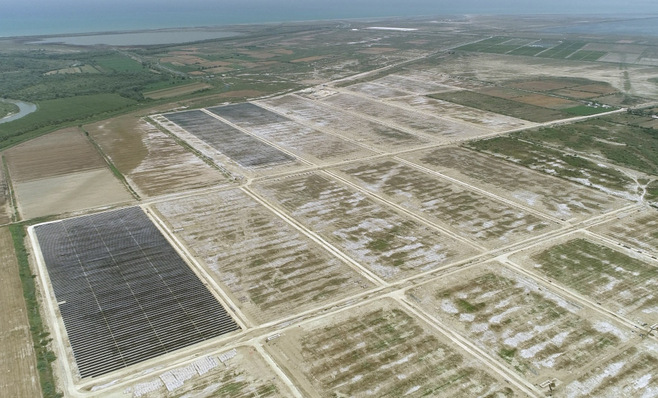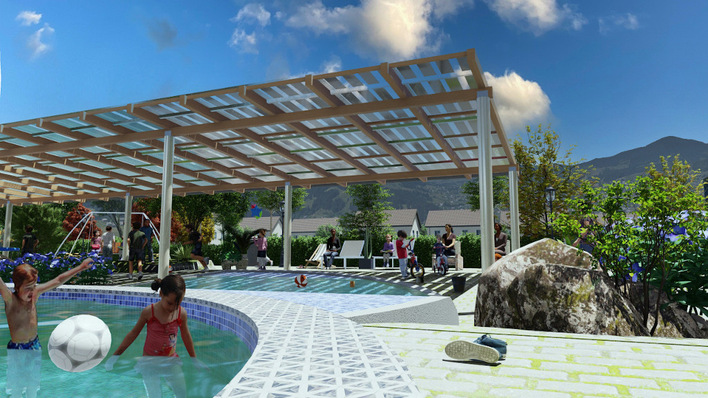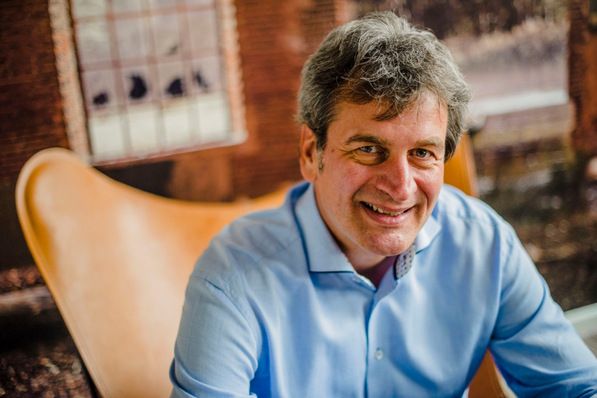In contrast to most existing hydrogen filling stations, which are supplied by tankers, Fronius focuses on the decentralised production of green hydrogen with decoupled heat. The pilot plant at the company's development site in Thalheim near Wels uses electrolysis to generate hydrogen mainly from solar power, which is available for internal fuel cell vehicles or is stored for conversion back into electrical power and heat.
4.35 kg green hydrogen daily
The SOLH2UB consists of a 6 kW photovoltaic system, which is integrated into a roof of the filling station, a dispensing system, a PEM electrolyser with 18KW, an H2 storage tank with 24 pressure vessels of 50 litres each, a water storage tank for the heat extraction as well as a 10 kW fuel cell for the return flow. The system can thus produce a maximum of 4.35 kg of hydrogen daily at a pressure of 350 bar, that#s half a tank of a fuel cell car. The H2 storage capacity of the pressure vessels at 350 bar is 27 kg. In order to guarantee the highest possible number of operating hours for the electrolyser, green electricity is also drawn from the grid in addition to the solar electricity generated in the system.
Implement sector coupling
The plant has been in trial operation since May and went now into normal operation. " serves as a central hub for solar energy and enables innovative coupling of the electricity, mobility and heat sectors," emphasised Martin Hackl, Head of Solar Energy at Fronius International. "We are convinced that hydrogen has the potential to become one of the energy sources of the future and to massively advance sector coupling and thus also the energy turnaround. The solar and welding technology company has been researching hydrogen applications for more than ten years.
As an operator, Fronius focuses above all on municipalities and companies that operate vehicles with a high energy requirement such as municipal vehicles, vans, buses or transporters. Together with Ladog (Germany), the company has developed a compact municipal vehicle with 50 kW that is equipped with a fuel cell drive but has not yet been approved for road use.

Opportunity for local authorities
"However, the chicken-and-egg problem also arises here," Hackl admitted with reference to the small number of available vehicles and the few H2 filling stations. But he is building on the growing demand for zero-emission vehicles in municipalities due to - impending - diesel driving bans and the integration of into decentralised municipal energy supply concepts with citizen participation as well as the development of a municipal charging infrastructure.
He also sees the possibility of demand-oriented self-generation, long-term storage and heat extraction as a major advantage, especially for municipalities. The latter can also increase the overall efficiency of the plant, which without heat recovery is around 60 percent. "In addition, the electricity grids will be relieved, as the electricity will mainly be consumed where it is produced," adds Thomas Rührlinger of Fronius Business Development Hydrogen Solutions.
Upscale to 500 kW planned
However, the company relies to upscale the SOLH2UB to increase profitability. "Our plant is definitely too small in the current design, we definitely want to upgrade it to 500 kW," said Hackl. The target is hydrogen costs of 10 to 12 Euro/kg. In order to minimize the operator risk, SOLH2UB will be offered at a fixed price for the hydrogen produced. (HCN)
Stay informed, get our free newsletter twice a week. Register here
More useful information:
https://www.pveurope.eu/News/Markets-Money/Combine-solar-with-green-hydrogen
https://www.pveurope.eu/Products/Others/H-Tec-Systems-presents-its-turn-key-power-to-gas-plant
https://www.pveurope.eu/News/Energy-Storage/Fuel-Cells-Solar-energy-all-year-long
https://www.pveurope.eu/power2heat/fronius-offers-new-energy-package-storage







